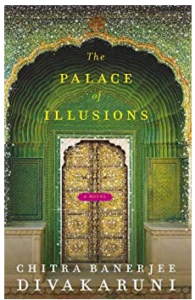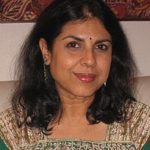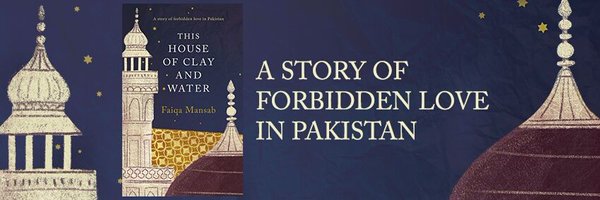
I have been spending the past couple of months or so bingeing on some serious retro reading about stories set in Kumaon , Bengal and Tamil Country of 19th Century. What surprises me is that the core issues debated then were not very different from the Whatsapp and TV channel debates today; only the medium was different.
Gora by Rabindra Nath Tagore gives a wonderful picture of the rise of Brohmosamaj , Influence of British Raj on the society (the good and the bad) and the Traditional Hindus’ resistance to this onslaught.
The fight continues to this day, politically and socially as can be seen from anti-superstition legislatures in Karanataka and Maharashtra and the bill now being debated in Kerala. Superstitions or blind faith , mostly harmless, have been common among all faiths including athiesm (Karunanithi never went out without his yellow shawl , UP Chief Minister wouldn’t visit NOIDA and master blaster Sachin Tendulkar always wore his left pad first, for luck). It is good to fight injustice and ignorance anywhere but somehow it is only Hinduism in general and brahmins in particular who have been consistently singled out to be attacked by ‘rationalists’. The irony of Brohma samaj is that it was a group of twice-born brahmins who started the movement to reform Hinduism from within but ended up becoming outcastes from all societies , Hindu and Non Hindu alike and finally Adhi Brohmo samaj had to be declared a separate religion, at least to validate the marriages among followers of the belief.
read more about brohmos

Every single character in the Novel is developed beautifully, taking care not to idolize or demonise any one. The followers of brohmosamj or Brohmos as they were called started out as reformers , but fell prey to creating another sect as rigid or perhaps more rigid , as the followers of Hindu Shastras. While Hindus have in-numerous beliefs or superstitions and some of them non-negotiable , the brohmos had evolved their own non-negotiable behaviour for their followers. It is not just they had to refrain from idol worship they were to stay away from from their own family members if any of them were to practice idol worship in whatever form.
The central character as the title suggests is ‘Gora’ short for Gourmohan Babu. He is firm in his convictions on following the Shastras as laid down over centuries. At the same time, he loathes to ill-treat a fellow human being in the name of religion or traditions.
His convictions are brought out in the umpteen debates he joins at the drop of a hat.
“Those whom you call illiterate are those to whose party I belong. What you call superstition, that is my faith! So long as you do not love your country and take your stand beside your own people, I will not allow one word of abuse of the motherland from you.”
…….”Reform? That can wait a while yet. More important than reforms are love and respect. Reform will come of itself from within, after we are a united people. You would break up the country into a hundred bits by your policy of separateness. Because, forsooth, our country is full of superstitions, you, the non-superstitious, must keep superior and aloof! What I say is,—may it be my greatest desire never to keep apart from the rest, even by becoming superior! ….
…..Let me tell you that we are not going to submit to outside attempts to reform us, whether it be from you or from foreign missionaries.”…….
“I want you to remember one thing. If we have the mistaken notion that because the English are strong we can never become strong unless we become exactly like them, then that impossibility will never be achieved, for by mere imitation we shall eventually be neither one thing nor the other. To you I make only this request: come inside India, accept all her good and her evil: if there be deformity then try and cure it from within, but see it with your own eyes, understand it, think over it, turn your face towards it, become one with it. You will never understand if you stand opposed and, imbued to the bone with Christian ideas, view it from outside. Then you will only try to wound and never be of any service.”
Then you have Anandmoyi, the most lovable, compassionate mother. She defies the society when it goes against her conscience to follow its dictates , yet she insists on staying in the society though it never accepts her ways. She brings to life, the mother that Swami Vivekananda speaks about in his lectures.
Paresh Babu is a prominent leader of Brohmosamaj, who was a young turk in his own youth, as one who broke away from traditional path . Over a period of time he matures into a kind of universal guru for Hindus and Brohmos alike.
Though a committed Brohmo, his heart is large enough to accommodate all:–
……..As for myself, I pray to god that I may always be a simple, humble worshipper of truth, whether in a Brahmo temple or at a Hindu shrine….
…..”There are plenty of such people amongst Brahmos also,” said Paresh Babu. “They want to sever all connections with Hinduism without discrimination, lest outsiders should mistakenly think they condone also its evil customs…
Binoy is a gentle person whose loyalty for Gora restrains him from exercising his free will at times. On some prodding from the spirited Brohmos girl Lolita he asserts his right to be open to all ideas, even while attached to the Shastras and traditions as long as they do not hurt anyone.
When Gora tries to stop him from having tea in a brohmo’s house, he takes a firm stand . It might look silly today to consider it courageous to accept food or water from a person of different faith, but one has to be in that space and time to understand what it takes to defy the societal norms.
“But really, Gora,” expostulated Binoy, “if it is a blow to society for someone to drink a cup of tea, then all I can say is that such blows are good for the country. If we try to protect the country from this kind of thing, we shall only make it weak and effeminate.”
The Brohmos sisters Sucharita and Lolita form the centre of the plot along with the Gora and Binoy. They are encouraged by Paresh Babu to question everything even while taking a humane approach to every issue. This very aspect, leads them to question the rigidity of thought in the supposed to be a reformist movement “The Brohmo Samaj” . Their mother ‘Baroda’ or Bordashundari on the contrary is an extreme brohmo to the extent she wouldn’t stand any Hindu custom or tradition if only because it is related to Hindus. This attitude results in a visceral hatred for idol worship, hindu scriptures ,rituals etc. The author brings in another character Harimohini perhaps to counter balance Ms Baroda. Harimohini is a typical pious Hindu lady in her external behaviour and yet she can be so manipulative to use the shastras as a weapon to hurt others or get her way through. Both Baroda and Harimohini are anti-thesis to Anandamoyi, who ironically is ostracized by both societies !
Krishnadayal, Gora’s father is the stereotype orthodox hindu who cares only for his own salvation or what he thinks would lead to that.
The entire story is narrated in the form of serious discussions , more like a formal debate . How the main protagonists start from rock solid convictions and yet evolve emotionally and intellectually to find a middle path acceptable to all parties is what the story is all about.

A Scene from a play Gora enacted in Hyderabad (Courtesy The Hindu).
After a number of twists and turns, it is neither the Shastras nor the dogmas of Brohmos but simple humaneness prevails ; the traditionalists Gora and Binoy get married to the Brohmos, Sucharitra and Lolita with the blessings of Gora’s mother Anandamoyi and Lolitha’s father Paresh Babu even while the entire society, brohmos and hindus alike are opposed to these marriages. They choose to be united by the common values they share like compassion , charity, sympathy for less fortunate people , rather than be divided by the ideologies of the society they belong to.
A wonderful read, particularly for the present times; I wish I could have read it in original Bangla , as many nuances get lost in translation.
Brohmo Samaj
Most of us would be aware that Brohmo Samaj was started as a reform movement from within the Hindufold. But not many of us would be aware of the number of splits and mergers it underwent over a period of time and its present status.
To put it briefly, it started as a Hindu reform movement, leaned heavily towards Christianity under Keshab Chandra Sen and then once Christian ideology was firmly expelled , it became an independent religion called Adhi Brohmo Samaj
The core Adi-Dharma doctrinal beliefs differing from Brahmanical Hinduism include:
- There is only One “Supreme Spirit”, Author and Preserver of Existence. (… Beyond description, immanent, transcendent, eternal, formless, infinite, powerful, radiant, loving, light in the darkness, ruling principle of existence …. Polytheism is denounced. Idolatry i.e. worship of images is opposed.)
- There is no salvation and no way to achieve it. (“Works will win”. Worshipful work is the way of existence. Work is for both body and soul. All life exists to be consumed. The soul is immortal and does not return to this World. There is neither Heaven nor Hell nor rebirth)
- There is no scripture, revelation, creation, prophet, priest or teacher to be revered. (Only the Supreme Spirit of Existence can be revered – not the Vedas, Granths, Bibles or Quran etc. Worship consist of revering the “inner light within” i.e. enlightened conscience)
- There is no distinction. (All men are equal. Distinctions like caste, race, creed, colour, gender, nationality etc. are artificial. There is no need for priests, places of worship, long sermons[3] etc. “Man-worship” or “God-men” are abhorrent to the faith and denounced since there is no mediator between man and God).
Legal Status of the Brahmo Religion
In a landmark case of 1901 (Bhagwan Koer & Ors v J.C.Bose & Ors, 31 Cal 11, 30 ELR IA 249) Britain’s highest judicial authority, the Privy Council, upheld the finding of the High Court of the undivided Punjab that the vast majority of Brahmo religionists are not Hindus and have their own religion. The Council upheld the finding of the High Court that Debendranath Tagore was the founder of the Brahmo religion. The High Court in 1897 had distinguished anusthanic Brahmo “religionists” (“outside the pale of Hinduism”) from ananusthanic “followers” of the Brahmo Samaj who continue to retain their Hinduism or other existing religion.
In 1949 the Government of India passed the “Hindu Marriages Validity Act”. Despite discussion in Parliament Brahmos are not brought within the scope of this Law. In 1955 the Government of India passes the “Hindu Code” (a comprehensive set of laws for Hindus). Again despite discussion in Parliament, Brahmo religionists are not brought within the scope of these laws which, however, now become applicable to Hindus who are also followers of the Brahmo Samaj.
In 2002, Bangladesh (whose Law Commission relied on the binding decision of the High Court of undivided Punjab) enacted a law recognizing Brahmo religionists and Brahmo marriages under traditional rites to Hindus, Jains, Sikhs and Buddhists as legally valid.
On 05.May.2004 the Supreme Court of India by order of the Chief Justice dismissed the Government of West Bengal’s 30 year litigation to get Brahmos classified as Hindus. The matter had previously been heard by an 11 Judge Constitution Bench of the Court (the second largest bench in the Court’s history).
A Trivia The Nehru family made a good use of the Brahmos Marriage Act -1872 , in that starting from Nehru’s sister Krishna Huttheesing, followed by Indira Gandhi , Rajiv Gandhi, Sanjai Gandhi and Priyanka Vadra, all got married under this act as this is the only ‘religion’ that caters for marriage between people of different religions and it doesn’t require any conversion.
Back to Top

 Brave New World was written between the world wars when World War – I was still referred to as the Great War. The communist challenge or the Eastern Bloc was still far from a political reality. The free world was expected to march on powered by Science, Industrial Revolution and Capitalist Economy. The old order was changing; Mustafa Kemal Atatürk had successfully abolished the caliphate and sultanate establishing the modern, secular Republic of Turkey . The character Mustafa Mond , the World Controller in the novel, probably takes inspiration from the Turkish statesman.
Brave New World was written between the world wars when World War – I was still referred to as the Great War. The communist challenge or the Eastern Bloc was still far from a political reality. The free world was expected to march on powered by Science, Industrial Revolution and Capitalist Economy. The old order was changing; Mustafa Kemal Atatürk had successfully abolished the caliphate and sultanate establishing the modern, secular Republic of Turkey . The character Mustafa Mond , the World Controller in the novel, probably takes inspiration from the Turkish statesman.







 The title, ” Anti social media” tells it all. Whatever is ambiguous in the title is clarified in the byline;
The title, ” Anti social media” tells it all. Whatever is ambiguous in the title is clarified in the byline; 



 The novelist, Namita Gokhale is from an illustrious family of Kumaon. Born in Lucknow in 1956, Gokhale was brought up by her irrepressible grandmother Shakuntala Pande—niece of freedom fighter Pandit Govind Ballabh Pant—and free-spirited aunts (Jayanti Pant and Hindi writer
The novelist, Namita Gokhale is from an illustrious family of Kumaon. Born in Lucknow in 1956, Gokhale was brought up by her irrepressible grandmother Shakuntala Pande—niece of freedom fighter Pandit Govind Ballabh Pant—and free-spirited aunts (Jayanti Pant and Hindi writer 

